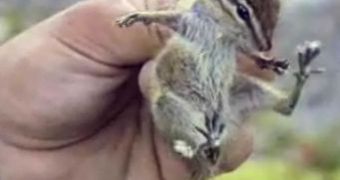It's no lie, even if this is another kind of eruption – one in which life erupts from what was once a death-spreading mountain.
Mount St. Helens is very well known for its huge eruption back in 1980, an event that didn't surprise anybody and that left visible traces until today.
“It began with the largest landslide in recorded history that uncorked an explosion that was directed horizontally and leveled the forest 13 miles out,” remembers evolutionary biologist and ecologist John Bishop.
“It was just a barren landscape, gray-and-pumice-colored, covered with rocks.”
That eruption knocked down 100-foot trees and burned everything in its path, and even if since then, there have been several small eruptions, none even compares to that one.
Bishop has been working on the mountain for the past 20 years, and knows it better than anyone, so he was really excited when, among the remaining dead trees that still litter the landscape, he saw life.
He says it's a true blessing, “a rare opportunity for scientists to get to study a devastated area and how it comes back from scratch in such detail.
“Up until the last 10 years, the landscape has been completely dominated by lupins,” he said, and these flowering lupin plantshave the ability of creating new soil from volcanic ash.
This is actually the soil that allowed the Sitka willow to grow, but Bishop says there is a problem:
“One of the things we've realized about these willows is that they're not getting big.
“And that's important because they create habitat for birds and mammals.”
The reason for this is the attack of small invasive weevils, that live inside the willows' stems, stopping the plants' growth or killing them.
Bishop explains that this is actually what nature usually does: “seemingly insignificant organisms, like insects that consume plants, play an extraordinarily important role in the sorting out process of deciding, essentially, which plants are going to stay in the landscape and which ones are going to disappear.”
The biologist is currently documenting the return of living things to the mountain, thanks to a little help from the National Science Foundation (NSF).
You can view the related video:

 14 DAY TRIAL //
14 DAY TRIAL //